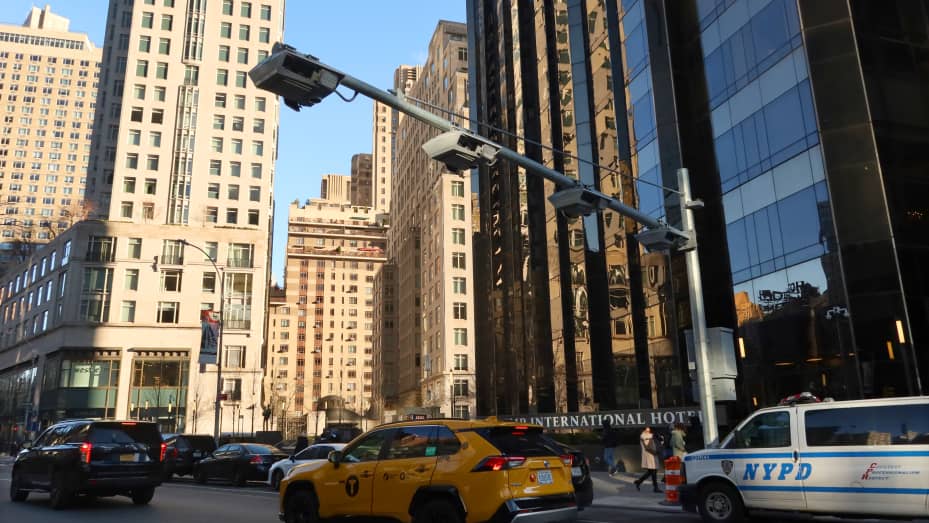New York City, often a harbinger of urban policies for the nation, has taken a bold step by becoming the first U.S. city to approve congestion tolls on drivers entering its central business district. The recent decision by transit authorities to implement a $15 fee for most motorists entering Manhattan’s busiest areas reflects a significant shift in urban transportation policies. This article delves into the multifaceted implications of this groundbreaking decision, exploring its potential impacts on commuters, public transit, the environment, and the broader socio-economic landscape of the city.
Understanding Congestion Pricing: Congestion pricing, long debated as a solution to urban traffic woes, involves imposing fees on vehicles entering designated areas during peak hours. The approval of congestion tolls in New York City signals a proactive approach to addressing traffic congestion, pollution, and infrastructure funding challenges. By discouraging private vehicle use and incentivizing alternative modes of transportation, such as public transit, cycling, and walking, congestion pricing aims to improve traffic flow and reduce environmental impacts in densely populated urban centers.
Impact on Commuters: The imposition of a $15 toll on most commuter passenger vehicles entering Manhattan’s central business district raises concerns about affordability and equity for commuters. While supporters argue that congestion tolls will incentivize shifts to public transit, opponents voice apprehensions about the financial burden on low-income workers and the potential ripple effects on the cost of goods and services. Understanding the socio-economic implications of congestion pricing is essential for crafting inclusive transportation policies that prioritize accessibility and affordability for all residents.
Environmental and Public Health Benefits: Congestion pricing proponents highlight its potential to reduce traffic congestion, vehicle emissions, and air pollution, thereby improving public health and environmental quality. By discouraging single-occupancy vehicle trips and promoting shared mobility options, congestion tolls align with broader sustainability goals aimed at mitigating climate change and enhancing urban livability. Analyzing the environmental benefits of congestion pricing underscores its role as a critical tool for fostering cleaner, greener cities and promoting sustainable transportation solutions.
Funding Public Transit Infrastructure: One of the primary objectives of implementing congestion tolls is to generate revenue for much-needed investments in public transit infrastructure and services. The projected $1 billion annual revenue from congestion pricing is earmarked for funding subway and bus systems, enhancing accessibility, reliability, and capacity for the city’s 4 million daily riders. By bolstering public transit networks, congestion pricing has the potential to catalyze a modal shift away from private vehicles and towards more efficient and sustainable modes of transportation.
Challenges and Considerations: Despite its potential benefits, congestion pricing faces several challenges and considerations, including legal disputes, environmental assessments, and socio-economic equity concerns. Lawsuits from small business owners and neighboring states underscore the complexities of implementing congestion tolls and navigating interjurisdictional issues. Addressing these challenges requires robust stakeholder engagement, transparent decision-making processes, and proactive measures to mitigate adverse impacts on vulnerable communities.
The approval of congestion tolls in New York City represents a pivotal moment in urban transportation policy, signaling a commitment to addressing traffic congestion, air pollution, and transit funding challenges. While congestion pricing offers promising solutions for promoting sustainable mobility and enhancing urban livability, its implementation requires careful planning, stakeholder collaboration, and equitable distribution of benefits and burdens. By harnessing the potential of congestion pricing as a catalyst for positive change, cities can chart a path towards more resilient, equitable, and sustainable transportation systems for the future.
